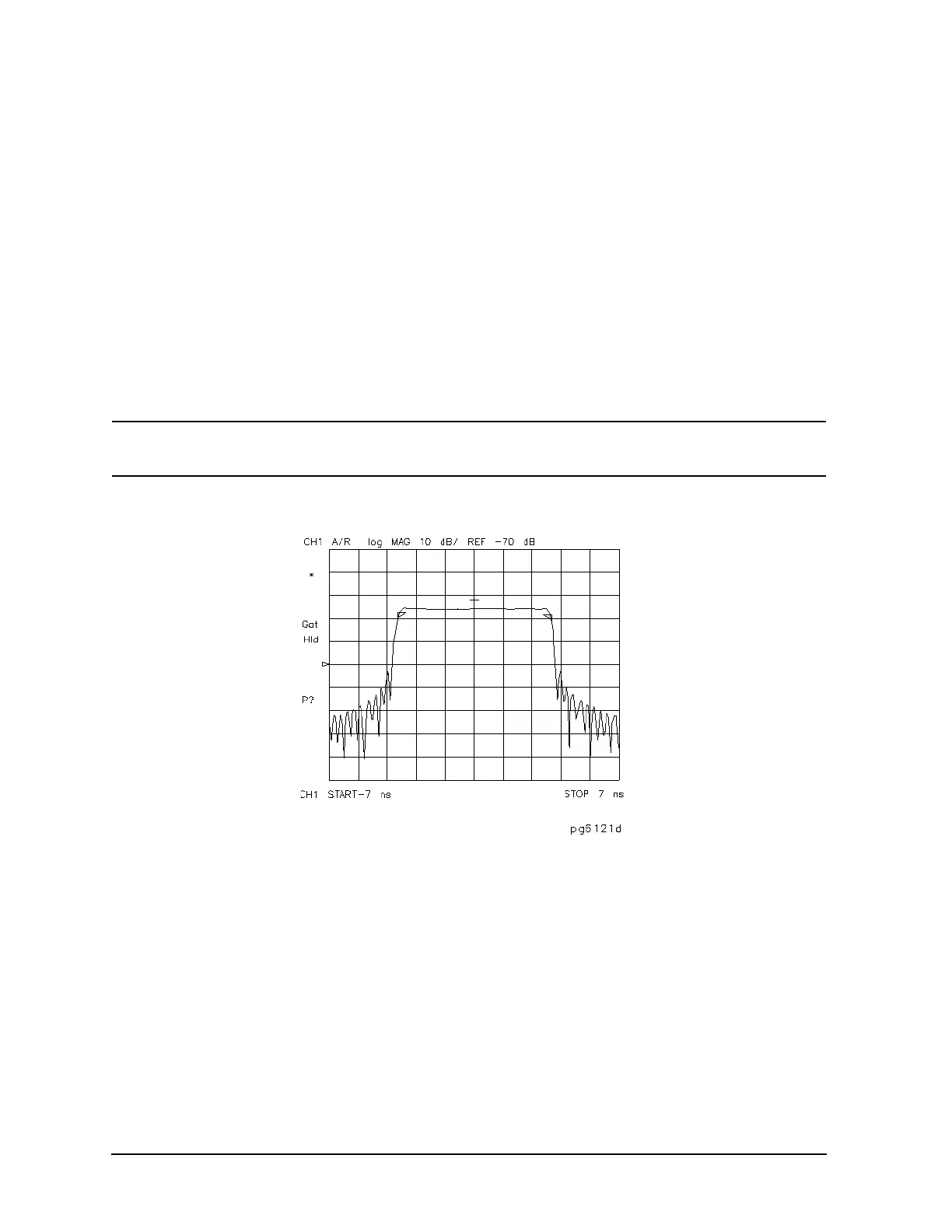7- 68
Operating Concepts
TRL*/LRM* Calibration (ES Models Only)
In total, ten measurements are made, resulting in ten independent equations. However, the TRL error model
has only eight error terms to solve for. The characteristic impedance of the line standard becomes the
measurement reference and, therefore, has to be assumed ideal (or known and defined precisely).
At this point, the forward and reverse directivity (E
DF
and E
DR
), transmission tracking (E
TF
and E
TR
), and
reflection tracking (E
RF
and E
RR
) terms may be derived from the TRL error terms. This leaves the isolation
(E
XF
and E
XR
), source match (E
SF
and E
SR
) and load match (E
LF
and E
LR
) terms to discuss.
Isolation
Two additional measurements are required to solve for the isolation terms (E
XF
and E
XR
). Isolation is
characterized in the same manner as the Full 2-port calibration. Forward and reverse isolation are measured
as the leakage (or crosstalk) from port 1 to port 2 with each port terminated. The isolation part of the
calibration is generally only necessary when measuring high loss devices (greater than 70 dB).
NOTE If an isolation calibration is performed, the fixture leakage must be the same during the
isolation calibration and the measurement.
Figure 7-44 8-term TRL (or TRL*) Error Model and Generalized Coefficients
Source match and load match
A TRL calibration assumes a perfectly balanced test set architecture as shown by the term which represents
both the forward source match (E
SF
) and reverse load match (E
LR
), and by the
22
term which represents
both the reverse source match (E
SR
) and forward load match (E
LF
). However, in any switching test set, the
source and load match terms are not equal because the transfer switch presents a different terminating
impedance as it is changed between port 1 and port 2.
Because the standard network analyzer is based on a three-sampler receiver architecture, it is not possible
to differentiate the source match from the load match terms. The terminating impedance of the switch is
assumed to be the same in either direction. Therefore, the test port mismatch cannot be fully corrected. An
assumption is made that:

